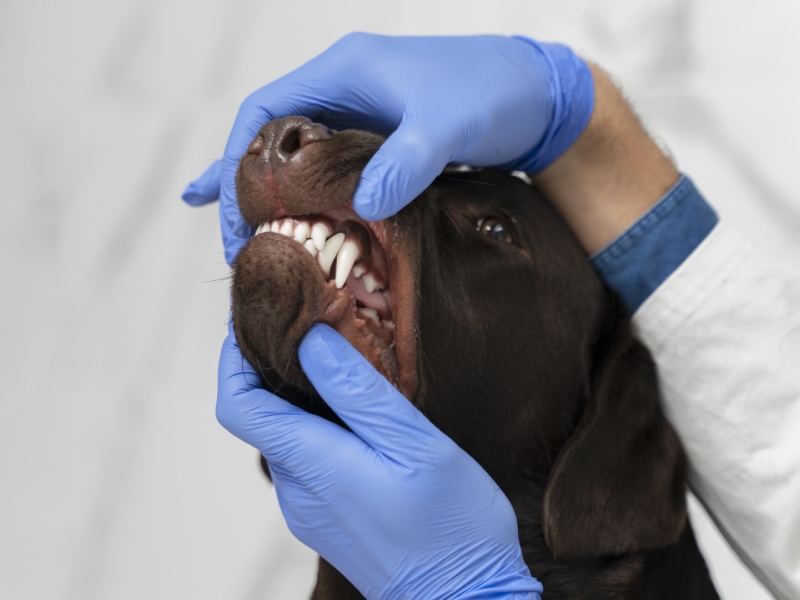Pet Dental Exams and Care
According to the American Veterinary Dental Society, 80% of dogs and 70% of cats have oral disease by the age of 3.
Pet Dental Exams and Care
It is the most frequently diagnosed health problem in pets. Common signs of oral disease include tartar buildup, red and swollen gums, bad breath, and changes in eating or chewing habits.
A veterinarian should evaluate your pet’s dental health at least once a year. Bacteria, tartar and food debris accumulates around a pet’s teeth and, if left unchecked, will lead to deterioration of the soft tissue and bone surrounding the teeth. Untreated, this accumulation results in irreversible periodontal disease and even tooth loss.
Anesthesia is commonly used during pet dental cleaning procedures at veterinary hospitals to ensure the safety, comfort, and effectiveness of the treatment. Here’s what you can typically expect when your pet undergoes an anesthesia-assisted dental cleaning at a AAA Animal Hospital:
- Preliminary Examination: Your pet will undergo a preliminary examination to assess their overall health and to identify any specific dental issues. The veterinarian will also consider your pet’s age, breed, and medical history.
- Anesthesia Consultation: The veterinary team will discuss the use of anesthesia with you. They will explain the type of anesthesia they plan to use, the associated risks, and any necessary pre-anesthetic testing.
- Pre-Anesthetic Bloodwork: In many cases, your pet may need pre-anesthetic bloodwork to ensure their liver and kidney function and overall health are suitable for anesthesia. This step helps the veterinary team adjust the anesthesia protocol if necessary.
- Anesthesia Administration: When your pet is ready for the dental cleaning, they will be placed under anesthesia, which ensures they are unconscious and pain-free during the procedure. The anesthesia is typically administered via intravenous (IV) injection or an inhaled gas.
- Monitoring: During the dental cleaning, your pet’s vital signs, including heart rate, blood pressure, oxygen saturation, and temperature, will be continuously monitored to ensure their safety.
- Dental Examination and Cleaning: The veterinarian will perform a thorough examination of your pet’s mouth. The veterinarian or dental technician will remove tartar and plaque from the teeth, polish the teeth, and check for any dental issues or extractions that may be needed.
- Post-Anesthesia Recovery: After the dental cleaning is completed, your pet will be carefully monitored as they wake up from anesthesia. They will be kept in a warm and comfortable environment to recover safely.
- Post-Procedure Care: Your veterinarian and technician will provide you with instructions for post-procedure care, including any prescribed medications or special diets.
- Follow-Up Appointments: Depending on the findings during the dental cleaning, your veterinarian may recommend follow-up appointments or additional treatments, such as extractions or further dental care.
Regular dental cleanings with anesthesia can help maintain your pet’s oral health and prevent dental problems that could lead to pain and other health issues. Give us a call! 951-371-7117

